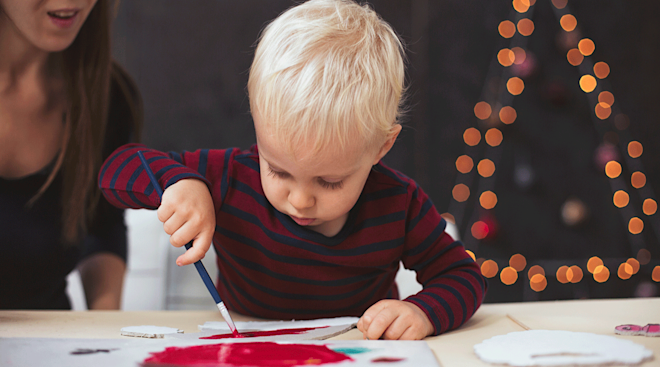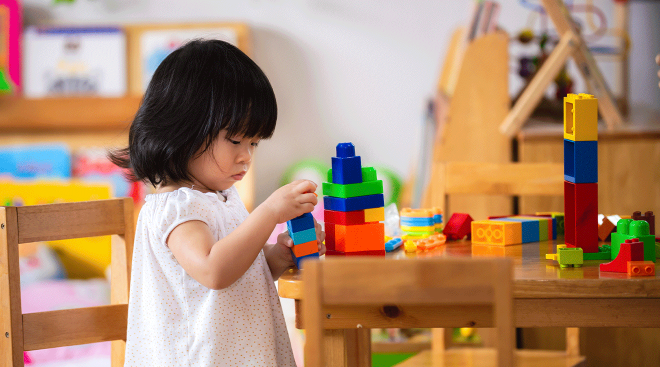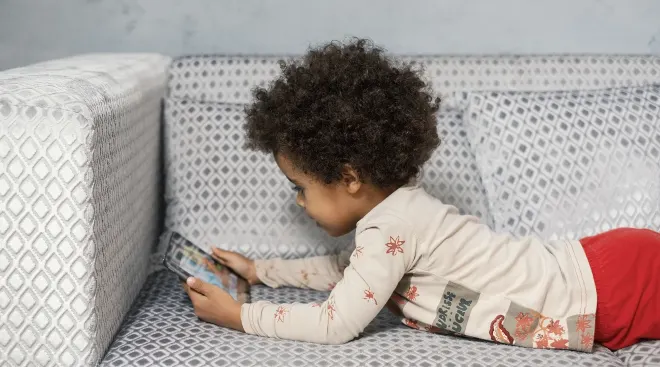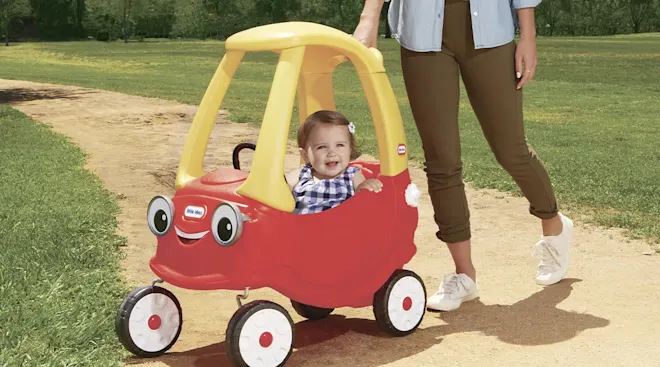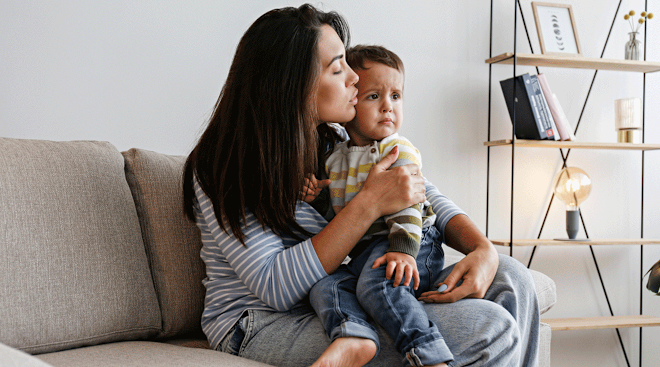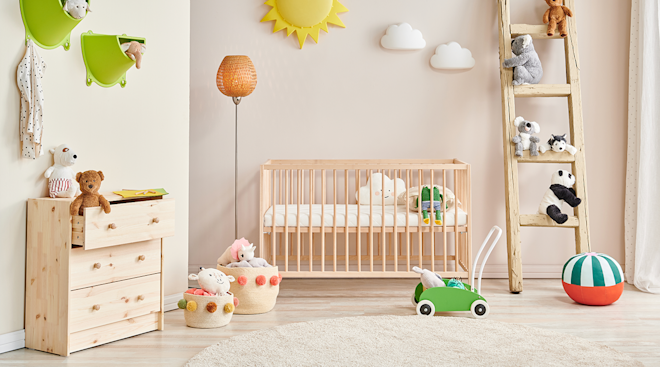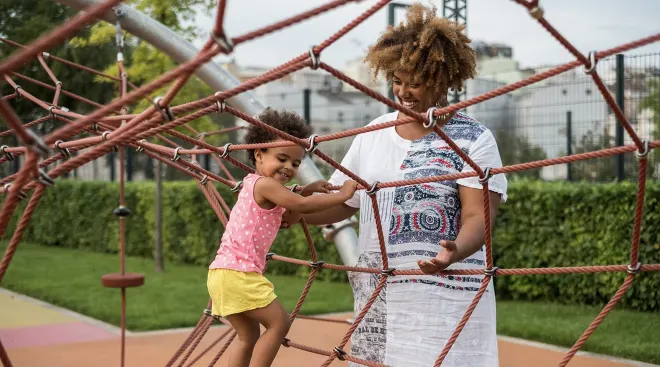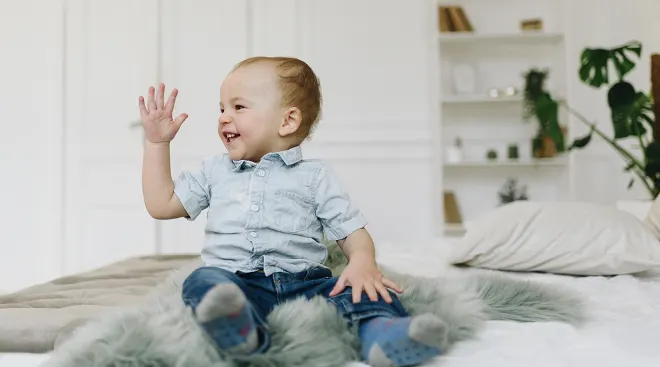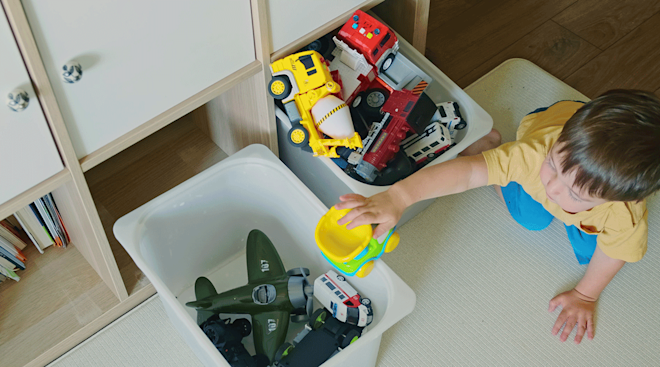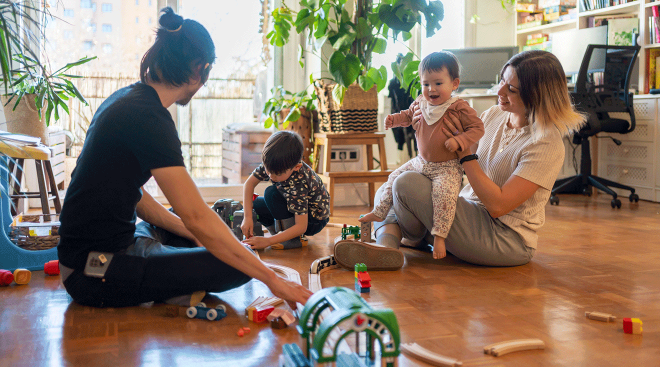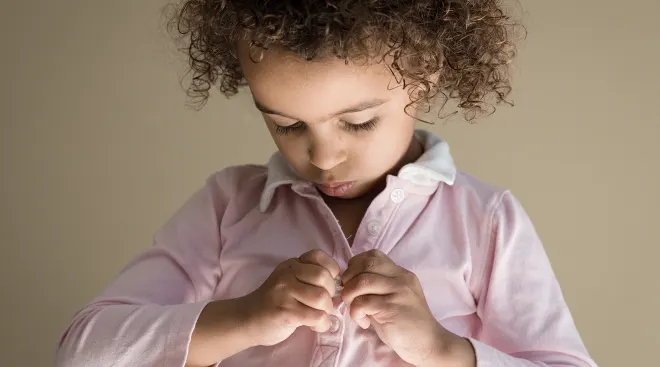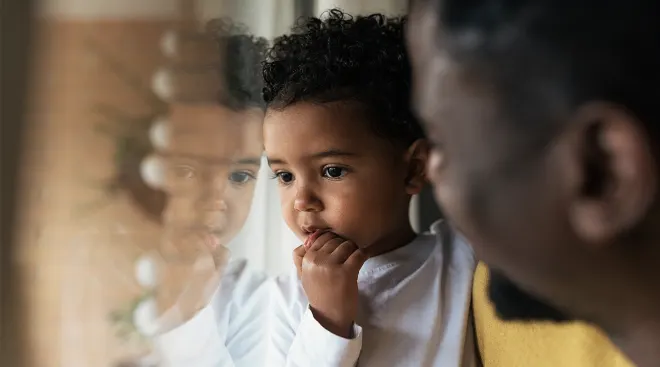How to Practice Active Listening With Your Child
Active listening is exactly what it sounds like. It’s putting in the effort to really engage and connect in conversation—and this can be incredibly helpful when communicating with toddlers and young children. That said, no matter how much we love our kids, it’s unrealistic to focus on them 100 percent of the time. Fortunately, you don’t have to strive for perfection: Do the best you can, and you’re likely to reap rewards soon. “The goal isn’t to always practice active listening,” says Ana Hernandez, PhD, a family therapist with the Ackerman Institute for the Family in New York City and owner of Valiente Relational Healing, LLC. “The goal is to strive for active listening as much as possible.”
Ready to get on your kiddo’s level and really hear what they have to say? Read on to learn how active listening can help children flourish, and learn some simple techniques to get started.
Active listening is “listening to understand and learn from [another] person,” rather than listening to react or allowing yourself to get distracted, explains Hernandez. When kids are involved, it means lending our ears with genuine curiosity about both what they’re thinking and feeling.
“It sounds like, ‘Tell me more,’ and looks like someone giving you their undivided attention with eye contact and genuine empathy,” Hernandez says.
When practicing active listening, we’re fully engaged in a conversation or activity, says Amber Dupre, MS, CCC-SLP, a pediatric speech-language pathologist at Nationwide Children’s Hospital in Columbus, Ohio. “When a parent or caregiver is practicing active listening with their child, they’re seated at their level, free from other distractions and responding to what the child is saying, doing or feeling,” she says.
For example, imagine your child tells you they did an art project at school today. You could fire back with something like, “You made an art project at school today? I wonder whether you used crayons, markers or paint.” This acknowledges what they said and provides fodder for more conversation.
Active listening can benefit children of all ages academically, socially and emotionally. This is especially true for toddlers, who are likely to pick up on our cues and start practicing active listening themselves, Hernandez says. “Toddlers are learning from their parents every day, and they need a model to show them how to listen,” she says.
Once you get the hang of it and truly start walking the walk of active listening, you can expect it to deliver a variety of benefits. Below, Dupre shares a few ways it can help you and your child:
- It improves language skills. Active listening encourages social interactions that can help toddlers improve their expressive and receptive language skills. This can help them relay their needs more effectively, follow directions and learn new words.
- It fosters social skills. Taking the time to listen while someone else is speaking encourages turn-taking, an important foundation for social interactions.
- It creates learning opportunities. In many cases, active listening can lead to conversations rife with new concepts and vocabulary.
- It boosts confidence. By showing kids that their words have power, active listening can help them develop self-esteem and emotional intelligence.
- It sets the stage for conflict resolution. Kids who practice active listening learn to listen before they respond. When they’re a little older, this will help them take the time to communicate their feelings calmly and come up with amenable solutions if conflicts arise.
- It supports mental health and well-being. Children who have caregivers who are willing to really listen to them tend to develop positive relationships with both adults and peers. What’s more, growing up in an active listening environment may encourage older children to share their feelings and reach out for help when faced with bullying or other challenges.
You don’t have to reshuffle your entire schedule or make any other drastic changes in your life to become a more active listener. “It doesn’t require a certain toy or activity and can be embedded into many daily routines,” Dupre says. When you’re ready to give it a go, try the following active listening techniques from Dupre to make the most of your communication.
- Give your child your full attention. Once your phone is down and the television is off, it’s easier to focus on a little person with a lot to say. Life is full of distractions, but staying present and honing in on your child’s needs will set the tone and show your engagement.
- Level with your kid. Whether you plop down on the ground beside your toddler or perch on a small step stool, seeing things from their perspective is an important step in relating to them.
- Follow your child’s lead. To encourage your child to engage in conversation, let them initiate the communication before you acknowledge, repeat or respond to what they’ve said.
- Use body language to make them feel heard. Make eye contact, nod your head in agreement and try other non-verbal gestures (like pointing) and expressions (raising your eyebrows) to show them you’re interested in what they’re saying.
- Don’t interrupt. Let your child finish their soliloquy on how garbage trucks work before you jump in with a response.
- Have fun. Active listening doesn’t mean all you’re doing is staring at each other and talking. You can include toys, games and books. Incorporate the strategies above into bath time, reading and playtime to switch things up.
- Say yes to funny business. Silliness can be a powerful tool that keeps the conversation going: “You like fire trucks? I thought you said fire ducks! Have you ever seen a duck ride a fire truck?”
Teaching your children active listening skills is all about modeling the appropriate behavior. “Children are constantly observing and imitating our actions as adults,” Dupre says. “When we model active listening, we’re showing them how we want them to listen and engage with others.”
For a more intentional teaching activity, Dupre recommends playing games such as “Simon Says” and “Follow the Leader.” “Giving your child a turn to be Simon or play a ‘teacher’ role can be such a powerful learning strategy,” she says. “It gives them control in a very fun way, where the adults listen and follow their instructions.” Playing games can also give you the opportunity to model active listening.
No matter how you teach it, active listening can make children feel important, which is something they crave. “Active listening says, ‘you matter,’” Hernandez reiterates. It’s a feeling that both children and parents appreciate.
Plus, more from The Bump:
Amber Dupre, MS, CCC-SLP, is a pediatric speech-language pathologist at Nationwide Children’s Hospital in Columbus, Ohio.
Ana Hernandez, PhD, is a family therapist with the Ackerman Institute for the Family in New York City and owner of Valiente Relational Healing, LLC, a private practice in Boston.
Learn how we ensure the accuracy of our content through our editorial and medical review process.
Navigate forward to interact with the calendar and select a date. Press the question mark key to get the keyboard shortcuts for changing dates.



































